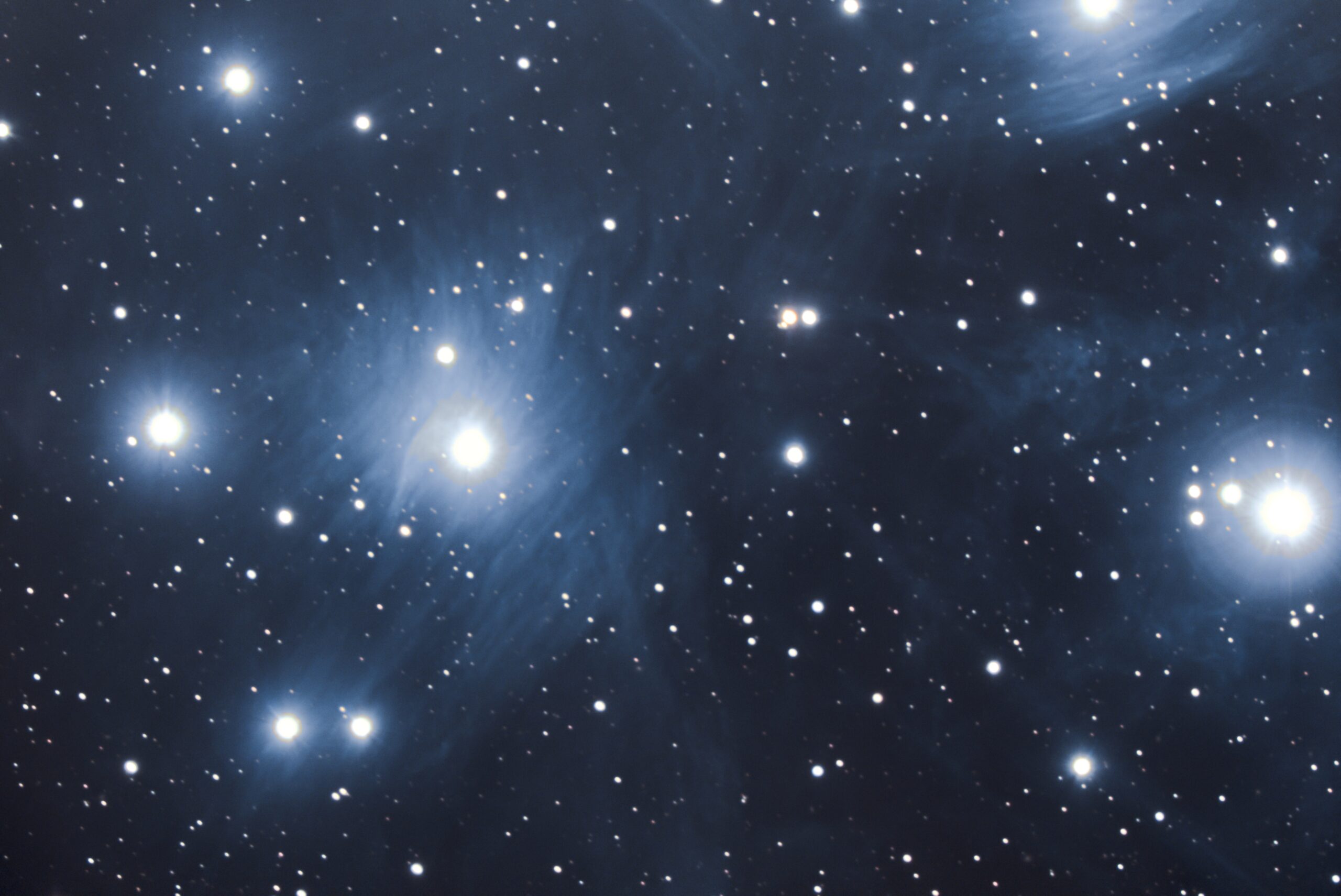About The Seven Sisters / The Pleiades
The Pleiades, also known as the Seven Sisters, is a star cluster located in the constellation of Taurus. It is one of the nearest open star clusters to Earth, and one of the brightest and most recognizable objects in the night sky. The Pleiades contains several hundred stars, but the seven brightest stars are what give the cluster its name. The brightest stars in the Pleiades are blue-white in color, and they are among the hottest and most massive stars known.
The Pleiades has been known since ancient times and has been mentioned in the mythology of many cultures. In Greek mythology, the Pleiades were the seven daughters of Atlas and Pleione, and they were transformed into stars by Zeus. In Japanese mythology, the Pleiades were seen as seven sisters who were pursued by a hunter, and in Native American mythology, the Pleiades were associated with the winter season and were used as a calendar to keep track of the passage of time.
Astronomers have studied the Pleiades for centuries, and the cluster has provided valuable information about the evolution of stars and the age of the universe. The stars in the Pleiades are relatively young, with an estimated age of around 100 million years. The cluster is also useful for testing the accuracy of astronomical models and theories, as the stars in the Pleiades are of similar age and composition, making it easier to compare their properties. In recent years, the Pleiades have been studied using advanced telescopes and technology, providing new insights into the formation and evolution of stars and star clusters.
Capture Details
Imaging Telescopes: Celestron EdgeHD 9.25″
Imaging Cameras: QHY268 C
Mounts Celestron: CGX
Accessories: QHY Polemaster · Celestron .7x Focal Reducer
Software: NINA – Nighttime Imaging ‘N’ Astronomy Guiding Telescopes: Orion 50mm Guidescope
Guiding Cameras: Orion StarShoot AutoGuider
Star Map

